- Home
- William C. Dietz
Into the Guns Page 4
Into the Guns Read online
Page 4
The bastard knew his name! It was a kidnapping then . . . What would a high-ranking American official be worth? Nothing really, since the government wouldn’t pay, but maybe the Tampico cowboy wasn’t aware of that. Or maybe he knew and didn’t believe it.
All of that flashed through Sloan’s mind, followed by the impulse to run. He circled the SUV in an attempt to use it for cover. Then he took off. Thanks to the adrenaline in Sloan’s bloodstream, plus the fact that he was a competitive runner, he got off to a fast start. His goal was to put as much distance between himself and the man with the shotgun as he could. Maybe the Tampico cowboy would hold his fire. After all, what good is a dead hostage? Unless . . .
Sloan felt the pellets strike his back a fraction of a second before he heard the BOOM. He stumbled, caught his balance, and continued to run. Sloan had grown up on a farm in Nebraska and, like all farm boys, knew a thing or two about shotguns. The fact that the man in the pink shirt was firing birdshot, rather than buckshot, meant he had a chance. Especially after sixty feet or so, when the spread produced by the short-barreled weapon would grow even wider.
As if to prove that point, the cowboy fired again—and if any of the shotgun pellets struck Sloan, he didn’t feel them. He was running west on the Avenida Álvaro Obregón. The thoroughfare consisted of two lanes divided by a median. Shabby stores lined both sides of the street where they waited for tourists who were unlikely to appear. But where were the shop owners? Gone. And no wonder . . . A man with a shotgun was chasing a gringo . . . Why hang around?
Sloan spotted some taller buildings up ahead and forced himself to run faster. He didn’t dare look back over his shoulder because that might cause him to break stride. He could hear the roar of an engine though—and knew his pursuers were about to catch up.
Sloan was desperate to get off the street, so he made a sharp left and ran toward an open doorway. Then, as he slipped into the shadowy interior, Sloan realized he was inside what had been a shopping arcade back before the gangs seized control of the city. A dry fountain marked the center of the inner courtyard, and a frozen escalator led to the floors above. Sloan took the trash-covered stairs two at a time.
He stepped onto the walkway that circled the second floor, and when sunlight touched his face, Sloan looked up to see blue sky through a hole in the roof. Then, worried about what the Tampico cowboy was up to, Sloan hurried over to a shop on the north side of the building.
The inside walls were covered with graffiti, drug paraphernalia lay scattered about, and the single window was open. As Sloan looked down, he saw that the SUV was parked out front. The cowboy was standing next to the vehicle, staring east. Why?
Sloan turned his head to the right, where he saw the oncoming wave. It was at least fifty feet high and coming fast! Sloan could see that dark shadowy objects were trapped inside the wall of water and realized that some of them were boats.
The tidal wave ran up the beach and broke over the row of shops that fronted the gulf. Most of the structures were obliterated, and it seemed safe to assume that the people inside were dead. The cowboy had entered the SUV by that time, and it was pulling away. But not quickly enough, as the rampaging water surged up the street and under the vehicle. The SUV rose, lost traction, and began to float. The water had traveled as far as it could by then . . . And as it flowed back to the gulf, the truck went with it.
Would the gang members be carried out to sea and killed? Sloan hoped so.
His mind raced as he followed a second escalator down to the ground floor. Now that he had time to think about it, Sloan realized that the kidnapping attempt had been planned days, if not weeks, in advance, and had nothing to do with the disaster. Was the attempt to kidnap him over? Maybe . . . But maybe not.
That meant it would be stupid to return to his hotel because that was where gang members would look first. So what to do? The obvious answer was to call for help. But first Sloan felt an urgent need to shed his power suit and attempt to blend in.
The plan wasn’t perfect, but it was better than nothing, and as Sloan continued west on the Avenida Álvaro Obregón, he was on the lookout for any sort of store that would sell men’s clothing. After what he estimated to be a mile or so, Sloan spotted a small mom-and-pop tienda off to the right. The front window was filled with lots of brightly colored sports outfits and a sign that read, “Ropa para el hombre activo.” (“Clothes for the active man.”)
As Sloan entered, he could tell that the proprietors were surprised to see him and not sure what to expect. But after he spoke to them in Spanish, they hurried to help. Once in the changing room, Sloan made use of the mirror to examine his wounds. There were three of them—and it would have been nice to dig the pellets out. But that wouldn’t be possible without help. Fortunately, the bleeding had stopped, and by wrapping the bloody dress shirt inside his jacket, he was able to conceal it.
Sloan left the tienda wearing a ball cap, a pair of wraparound shades, and a shirt with an enormous soccer emblem on it. The rest of his outfit consisted of Levi’s and a pair of Nike knockoffs. Sloan stuffed the business suit into the first trash can he passed. Now, with the disguise in place, Sloan felt a good deal more secure. The next thing he needed to do was to make contact with his office in D.C. Or, failing that, the embassy in Mexico City. Either one of which would send help.
For the first time since early that morning Sloan removed his cell phone from a pocket and attempted to make a call. What he got was a recorded announcement. “Lo sentimos. El servicio telefónico no está disponible en este momento. Por favor, inténtelo de nuevo más tarde.” (“We’re sorry. Telephone service is not available at this time. Please try again later.”)
Sloan swore. It seemed safe to assume that the meteor, assuming that was what he’d seen, was responsible for the outage. So he wasn’t going to get any help—not in the short term anyway. What to do? Sloan looked around. There were a lot of people on the street, and sirens could be heard in the distance. None of the other pedestrians was paying any attention to him, and that was good.
Maybe he should find a second hotel, check in, and hole up. Once cell service was restored, he would call for help. But how sophisticated was the criminal network that ran Tampico? The clothes had been purchased with cash, so there was very little of it left. What would happen if he used a credit card? Would gang members come on the run? And even if they didn’t, would a hotel accept a card they couldn’t verify?
Sloan concluded that it would be stupid to use a card until he knew the answer to at least some of those questions. He needed a goal though . . . Something to do. Head for the airport? No. The General Francisco Javier Mina International Airport was located at the heart of the city, and planes could normally be seen taking off and landing around the clock, and the ominous-looking sky was empty.
So what to do? He figured the next step was to find a place to hide, stay there until nightfall, and move under the cover of darkness. But in which direction? The obvious answer was north, to the good old US of A. Texas was only three hundred miles away! It felt good to have a plan—even if the details were a bit vague.
Sloan had passed a number of vacant buildings during his walk. Some were grouped in clusters, and leaning on each other for support, while others stood in splendid isolation. The Hotel Excelsior was one of the latter. He’d passed it earlier, and as Sloan approached the building for the second time, he knew it was the one. Not because it was inherently safer somehow—but because the Excelsior’s faded glory appealed to him. The ten-story hotel had two Mission-style towers and was adorned with rows of high-arched windows, ornamental iron balconies, and peeling white paint. Down on the ground floor, there were two verandahs, one to the left of the main entrance and one to the right. What had once been carefully manicured trees were huge now and surrounded by trash. A sad sight indeed.
In spite of the plywood nailed across the front door, Sloan felt sure there was a way in. And sur
e enough . . . As he circled the building, he came to a crude staircase. It consisted of a crate pushed up against an old dumpster. After climbing up onto the top, Sloan was able to step through an empty window into the hotel’s kitchen.
Everything of value had been stolen by then, so the only things that remained were the enormous stove, a concrete prep table, and lots of trash. Were people living there? That was a distinct possibility, and Sloan knew he was taking a chance. Light filtered in through arched windows as he passed through the dining room, entered the lobby, and spotted the reception desk. The air was thick with the smell of urine. From there, it was a short walk to a marble staircase, which remained elegant, in spite of how filthy it was and the mindless obscenities that had been spray-painted onto its walls.
Sloan followed the stairs up to the mezzanine floor. That’s where the bar had been . . . And Sloan could imagine people sitting at tables and looking into the lobby below as they had a drink. Even though there were lots of rooms on the floors higher up, Sloan preferred to stay low, where he would know if people entered the building and would be able to escape more easily. With that in mind, he circled the mezzanine, looking for a spot to take a nap. He chose a corner where a previous “guest” had been kind enough to place a large piece of cardboard on the floor. It was dusty but otherwise clean.
So Sloan lay down, curled up into the fetal position, and allowed his thoughts to wander. The coast. He would return to the coast. It might be difficult to find a boat that hadn’t been damaged by the tidal wave, but he would try. And assuming that he found one, he’d row or sail it north. And if that plan failed, he would walk. Three hundred miles divided by fifteen miles per day equaled twenty. That was how long it would take. Okay, twenty-five, just to be safe. But one way or another . . .
Sloan woke to the sound of machine-gun fire off in the distance somewhere. He sat up and looked around. It was dark, and only the slightest bit of light was leaking in through the windows—a sure sign that the power was off. The firing stopped. Sloan stood and checked his watch. It was time to get going. A task that would be more difficult without streetlights. Why didn’t you buy a flashlight instead of tacos? Sloan asked himself. Because I’m an idiot, came the response.
Sloan took a few steps, tripped, and nearly fell. That was when he remembered the flashlight app on his cell phone and turned it on. A blob of light preceded him down the stairs. Once Sloan was outside, he had to turn the light off or run the risk of attracting trouble. The moon was up, thank God, which meant there was enough light to navigate by. And that reminded Sloan of the compass on his phone. All he had to do was check it occasionally to stay on course.
Sloan tried to remain in the shadows as he began what promised to be a five- or six-mile hike back to the gulf. The same five or six miles he’d walked earlier that day. But that couldn’t be helped. What was, was. Now, as Sloan’s night vision continued to improve, he could make out glimmers of light in some of the buildings that he passed. Battery-powered lanterns perhaps, or candles, mostly hidden lest they attract predators. And they were out and about. More than once, Sloan had to seek cover as headlights appeared and a pickup loaded with gun-wielding men roared past. Gangbangers? Yes. On their way to participate in one of Tampico’s never-ending turf wars.
The sky was lighter and it had started to rain by the time Sloan entered the flood zone. There wasn’t much to see at first. But it wasn’t long before he found himself in among smashed cars and damaged buildings. Objects of every sort were strewn about, including hundreds of plastic jugs, a sizeable section of fishing net, a motorcycle helmet, brightly colored toys, a seaweed-draped sofa, a straw hat floating in a puddle, and a scattering of identical knapsacks. From a cargo container? Probably. They were navy blue and adorned with the Adidas logo. Sloan took one for himself. It was wet but would dry out once the rain stopped.
Then, as Sloan entered the area immediately west of the beach, he saw a navy patrol boat. It was big, at least sixty feet long, and looked like a beached whale. Was that the vessel his fellow officials had been on? Quite possibly.
He paused to look up. The rain had slackened a bit—and the sun was no more than a dimly seen glow. What if a semipermanent haze kept the normal amount of sunlight from reaching the ground? The solar industry would suffer . . . But that was the least of it. Crops would fail all around the world, and millions, if not billions of people would starve. It was a horrible thought, and all Sloan could do was hope that his worst fears wouldn’t come true.
Sloan turned onto the Corredor Urbano Luis Donaldo Colosio and followed it north.
An hour passed. And about the time the rain stopped, and people began to emerge from their homes, Sloan came across a rusty bicycle. It was leaning against a fence—and was too good an opportunity to pass up. After a quick look around, Sloan climbed aboard and pedaled away. The terrain was flat, and he made good time.
The highway was headed west, so Sloan turned right onto the Boulevard de los Ríos, which took him north into an industrial area. A car sprayed him with water as it passed, but Sloan was so wet he barely noticed.
Eventually, he spotted a convenience store that was still open for business and hurried to seize the opportunity. Assuming his theories were correct, the local tiendas would start to run out of goods or be overrun by looters soon. So it was important to buy what he could.
Sloan parked the bike out back, circled around to the front door, and went inside. He had the equivalent of $168.00 US and was determined to spend every peso of it before merchants stopped accepting government currency. The store’s interior had a homey feel—and the shelves were well stocked. Sloan filled a basket with two Bic lighters, a large pocketknife, a plastic cup, a small cooking pot, and the sort of prepackaged foods that are light and easy to prepare. He topped the load off with a large bottle of water.
If the woman behind the counter was curious, she gave no sign of it as she rang up the purchases. It didn’t pay to ask questions . . . Not in the city of Tampico. She had long pink fingernails, each of which was decorated with a finely drawn gold cross, and they seemed to dance over the cash register’s keys. As the proprietress handed Sloan the bill, he saw that the total was a third more than what he’d expected. And when he asked her about it, she shrugged. “Prices have gone up.”
“Since yesterday?”
“Sí.”
Sloan sighed, removed a third of the food from the basket, and asked her to total it again. The second bill came in slightly under what Sloan had—so he bought a map and three crispy taquitos. After loading his purchases into the damp knapsack, Sloan went out back to eat. Judging from the trash that lay strewn about, other people ate there all the time. He was hungry, and the taquitos were gone in no time.
The next hour and a half was spent pedaling north to a bay called Puerto de Altamira. An access road took him east past the bay and onto land that bordered the east–west ship channel. Because the terrain was low and flat, the tidal wave had been able to sweep across it without encountering any resistance. Multihued shipping containers with names like MATSON, SEALAND, and MAERSK were scattered like abandoned toys.
And crowds of people, many with pickup trucks, were swarming around the containers, taking what they could. Sloan gave them a wide berth as he continued on his way. The air was thick with the smell of rotting sea life, a rusty freighter sat high and dry, and Sloan saw a body lying facedown next to a pile of debris.
Then Sloan spotted the yacht. It was at least fifty feet long and lying on one side. And there, secured to the deck just aft of the streamlined cabin, were two red kayaks! A kayak would be perfect for paddling up the coast. Sloan did a 360, looking for other scavengers, and saw that two men were working on a fishing boat. But they were a thousand yards away—and were busy patching a hole in the boat’s hull.
Thus encouraged, Sloan made his way up to the yacht and lowered the bike to the ground. Then came the task of climbing in ove
r the downside rail and making his way up to the spot where the brightly colored watercraft were waiting for him. After considerable effort, Sloan managed to cut one of them loose. The plan was to lower it gently to the ground, but once the kayak was free, it fell.
Fortunately, the surface below the yacht was dirt rather than cement, and no significant damage was done. The kayak was about ten feet long, weighed about forty pounds, and came with a hard, plastic seat. That meant it was intended for recreational use rather than touring, but beggars can’t be choosers.
The only thing he lacked was a paddle. Was that stored inside the yacht somewhere? If he entered the yacht, Sloan feared that looters might take the kayak. But a kayak without a paddle was worthless, so there was no choice. It was difficult to move around inside the boat, but after ten minutes of searching, Sloan found two collapsible paddles that were stored in a side locker. He took both along with a coil of line and some canned goods.
Once outside, Sloan was relieved to find that the kayak was right where he’d left it. After placing the paddles and his other belongings in the cockpit, he had to haul the kayak across open ground to the slate-gray water beyond.
The biggest problem was figuring out a comfortable way to carry it. Sloan carried it like a suitcase for a while. Then, when that grew tiring, he hoisted it up over his head. But being a desk jockey, he couldn’t maintain that position for very long.
Finally, after fifteen minutes of effort, Sloan made it to the water. It was choppy and littered with floating trash but a welcome sight nonetheless. Sloan’s plan was to follow the coast north, paddling at night and hiding during the day. And that should be possible given all the inlets, bays, and lagoons that lay along the coast.

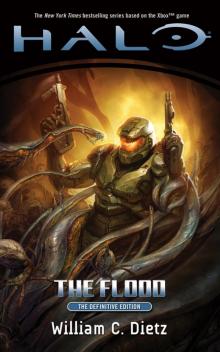 Halo: The Flood
Halo: The Flood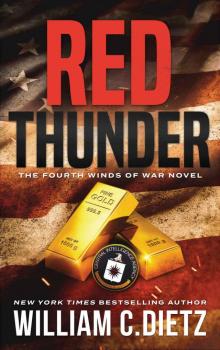 Red Thunder (Winds of War Book 4)
Red Thunder (Winds of War Book 4)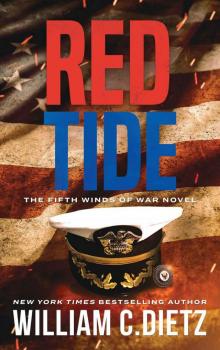 Red Tide
Red Tide Graveyard
Graveyard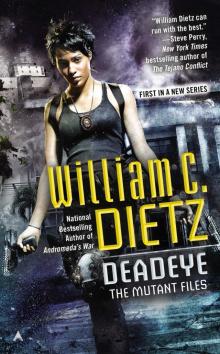 Deadeye
Deadeye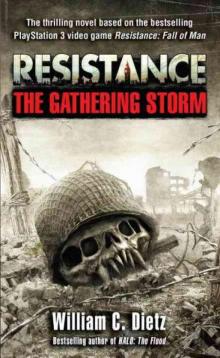 Resistance: The Gathering Storm r-1
Resistance: The Gathering Storm r-1 Legion Of The Damned - 02 - The Final Battle
Legion Of The Damned - 02 - The Final Battle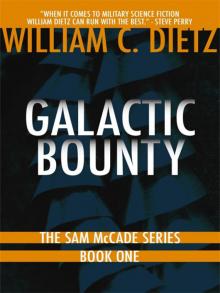 Galactic Bounty
Galactic Bounty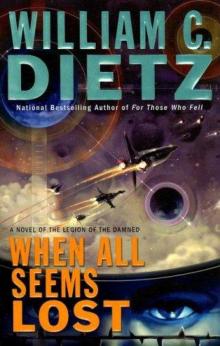 When All Seems Lost
When All Seems Lost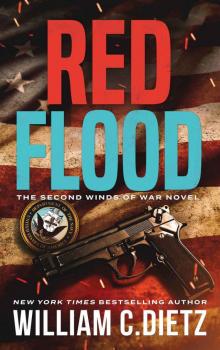 Red Flood (Winds of War Book 2)
Red Flood (Winds of War Book 2)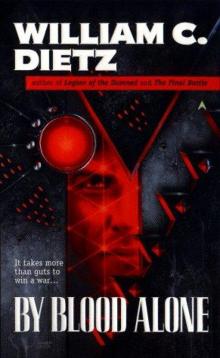 By Blood Alone
By Blood Alone Andromeda's War (Legion of the Damned Book 3)
Andromeda's War (Legion of the Damned Book 3)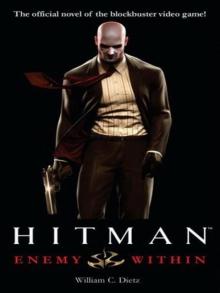 Hitman: Enemy Within
Hitman: Enemy Within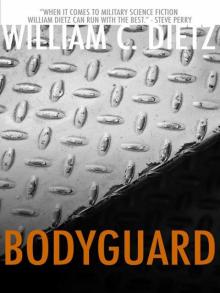 Bodyguard
Bodyguard EarthRise
EarthRise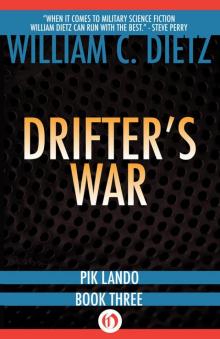 Drifter's War
Drifter's War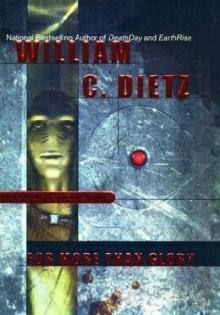 For More Than Glory
For More Than Glory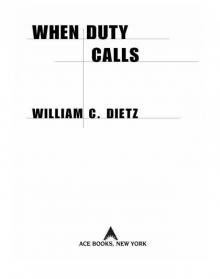 When Duty Calls
When Duty Calls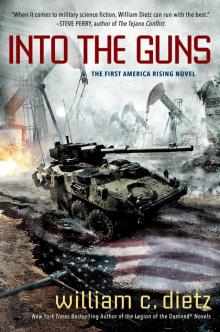 Into the Guns
Into the Guns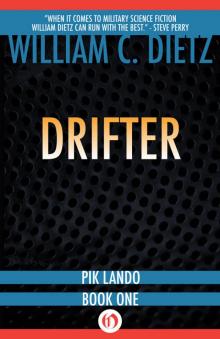 Drifter
Drifter Ejecta
Ejecta When All Seems Los lotd-7
When All Seems Los lotd-7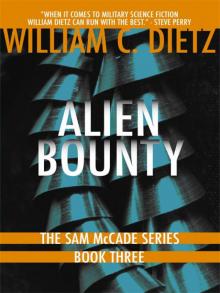 Alien Bounty
Alien Bounty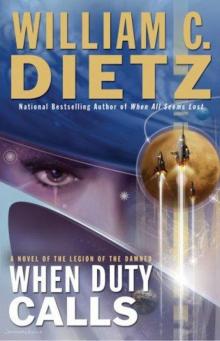 When Duty Calls lotd-8
When Duty Calls lotd-8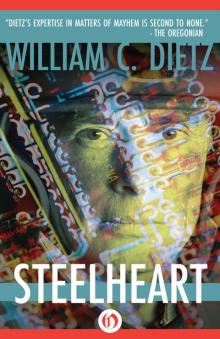 Steelheart
Steelheart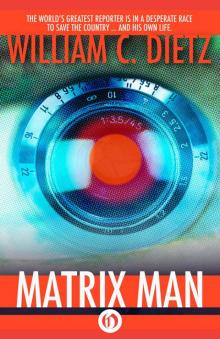 Matrix Man
Matrix Man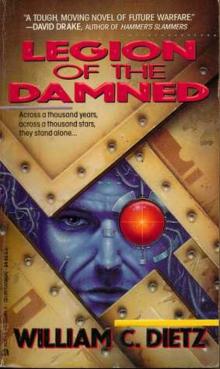 Legion of the Damned
Legion of the Damned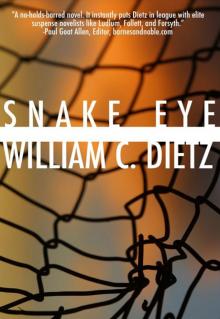 Snake Eye
Snake Eye Logos Run
Logos Run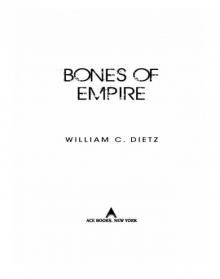 Bones of Empire
Bones of Empire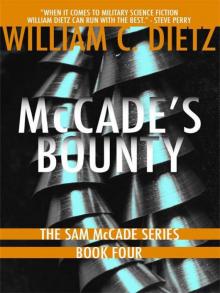 McCade's Bounty
McCade's Bounty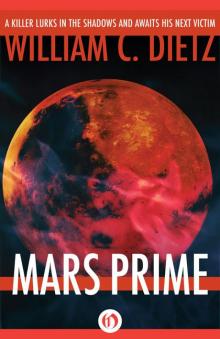 Mars Prime
Mars Prime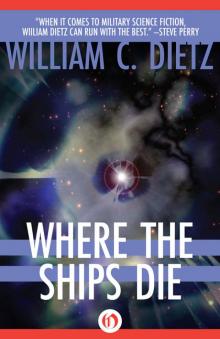 Where the Ships Die
Where the Ships Die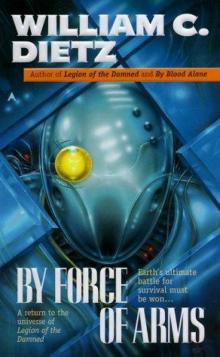 By force of arms lotd-4
By force of arms lotd-4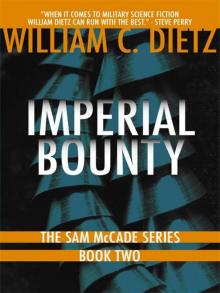 Imperial Bounty
Imperial Bounty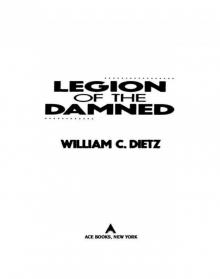 Legion Of The Damned - 01 - Legion of the Damned
Legion Of The Damned - 01 - Legion of the Damned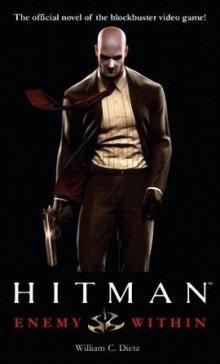 Hitman: Enemy Within h-1
Hitman: Enemy Within h-1 Drifter's Run
Drifter's Run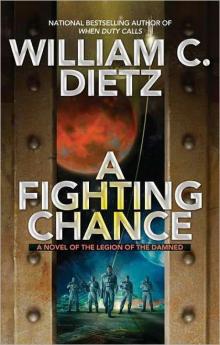 A Fighting Chance
A Fighting Chance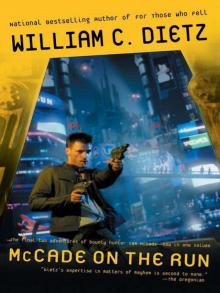 McCade on the Run (Sam McCade Omnibus)
McCade on the Run (Sam McCade Omnibus)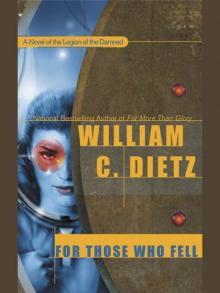 Legion Of The Damned - 06 - For Those Who Fell
Legion Of The Damned - 06 - For Those Who Fell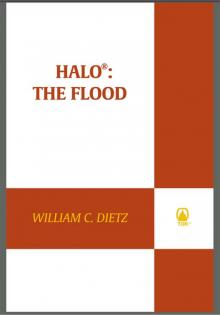 Halo. Flood
Halo. Flood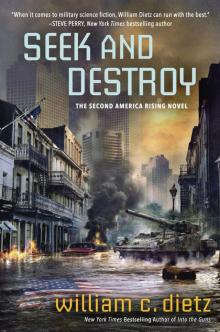 Seek and Destroy
Seek and Destroy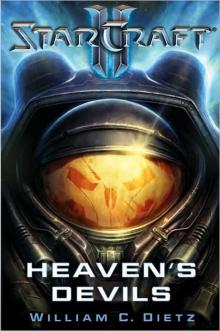 Heaven's Devils si-1
Heaven's Devils si-1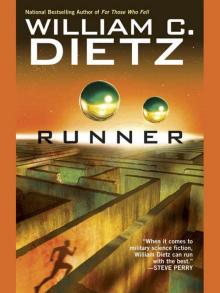 Runner
Runner By Force of Arms
By Force of Arms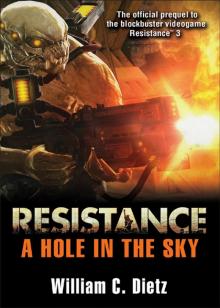 A Hole in the Sky
A Hole in the Sky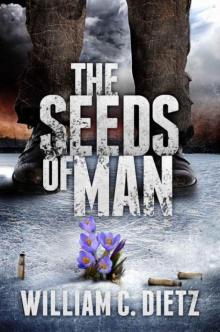 The Seeds of Man
The Seeds of Man Andromeda's Fall
Andromeda's Fall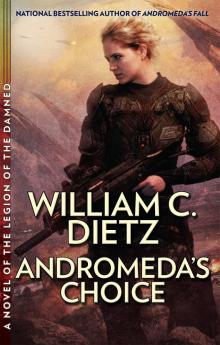 Andromeda’s Choice
Andromeda’s Choice Prison Planet
Prison Planet Heaven’s Devils
Heaven’s Devils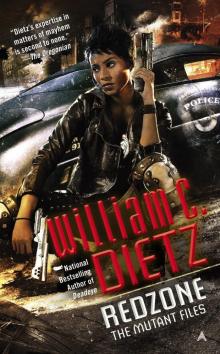 Redzone
Redzone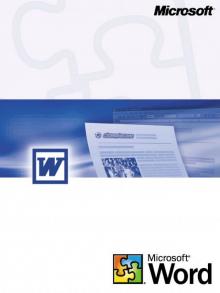 Jedi Knight
Jedi Knight